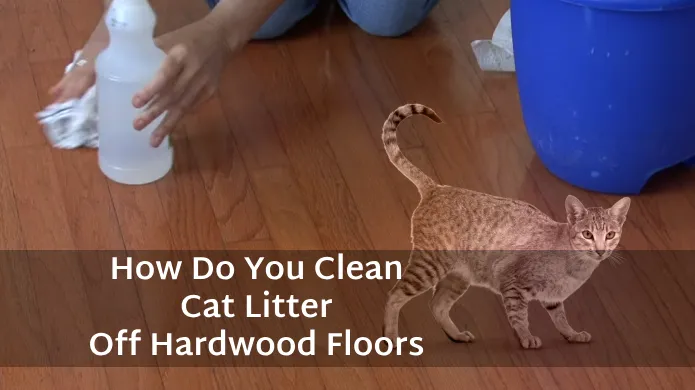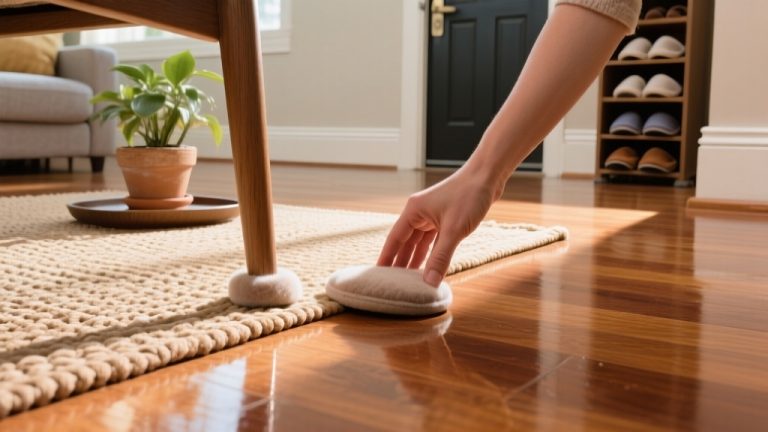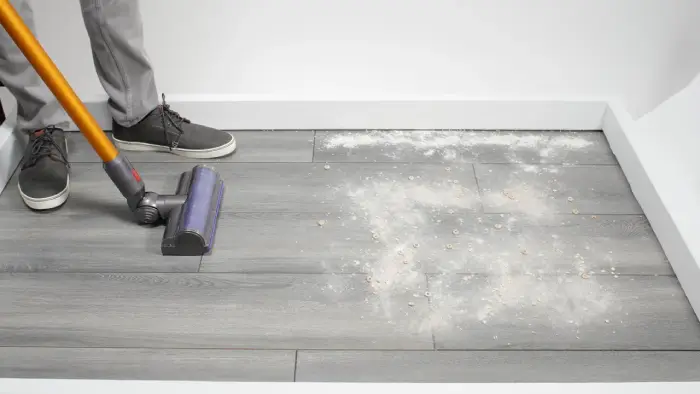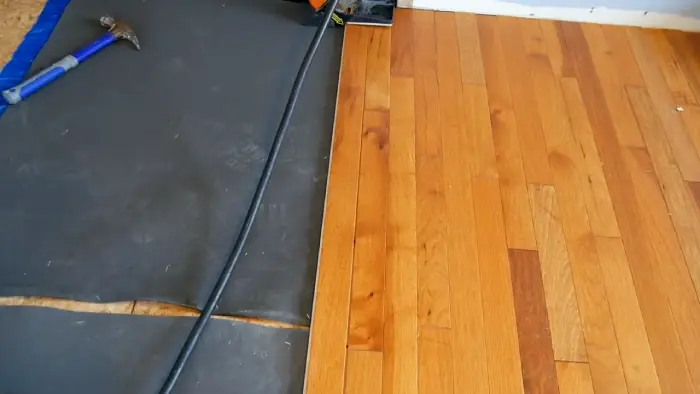How Do You Clean Cat Litter Off Hardwood Floors: Five Steps [DIY]
Do you have a furry feline friend at home who loves to use their litter box? You may have noticed that cleaning up after them is a hassle, especially regarding hardwood floors.
It’s not uncommon for cat litter to scatter around the area and leave residue on your beautiful flooring. But with a few simple steps, you can easily remove cat litter from hardwood floors.
To clean your cat litter off your hardwood floors, remove clumps of litter still on the floor. After that, sweep up any remaining litter and mop the floor. Then rinse the floor thoroughly. Finally, let the floor air out before walking.
Today we’ll review step-by-step instructions on cleaning up cat litter off hardwood floors and answer some common questions. So, grab your cleaning supplies, and let’s get started.
How to Clean Cat Litter Off Hardwood Floors: Steps to Follow
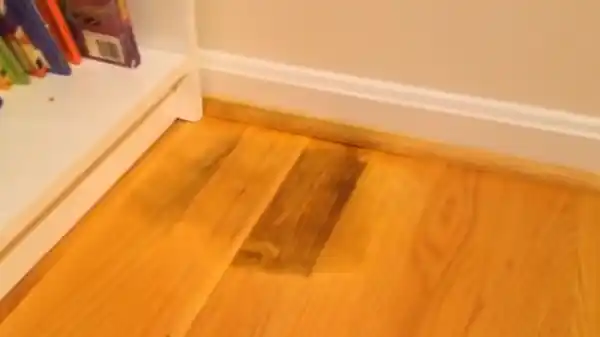
- Step 1: Scoop Up the Clumps
- Step 2: Sweep and Mop the Floor
- Step 3: Rinse the Floor
- Step 5: Let the Floor Air Out
Cleaning cat litter off hardwood floors can be challenging, but it’s important to maintain a clean and healthy living environment. Here are some simple steps to make this task easier and more efficient:
Step 1: Scoop Up the Clumps
Make cleanup a breeze by scooping up those clumps from your feline friend’s potty spot, ensuring a clean and fresh environment for you and your pet. Here are some tips to help you effectively scoop up those clumps:
- Use a scooper with wide slots to easily sift through the litter and pick up clumps.
- Be gentle when scooping to avoid scratching the hardwood floors.
- Dispose of the clumps in a plastic bag and tie them tightly before throwing them in the trash.
- Repeat the scoping process until all the clumps are removed.
- Check the litter box for any leftover clumps to ensure you have removed everything.
Step 2: Sweep and Mop the Floor
Once you’ve scooped up the clumps, sweeping and mopping the hardwood floor is important to remove any loose litter. You don’t want to leave any litter on the floor because it could become stuck in your cat’s paws, causing discomfort or even injury.
To sweep the floor, start in the room’s corners and work towards the center, using a dustpan to pick up any debris. Once you’ve swept the entire room, use a slightly damp mop to clean the floor well.
Step 3: Rinse the Floor
To ensure your wood floors are properly disinfected, rinse them with warm water and a slightly damp mop. After allowing the disinfectant to sit for a few minutes, it’s important to rinse it off thoroughly to prevent any damage to your flooring.
Be sure to carefully mop up any excess water, avoiding any cracks or crevices that moisture could negatively impact. Once you’ve rinsed the floor, it’s time to move on to the next step.
Step 5: Let the Floor Air Out
Now that you’ve thoroughly rinsed your hardwood floor with warm water, the next step is to let it air out. This is an important step that ensures any leftover moisture evaporates and the floor is completely dry before you step on it again.
To properly let your floor air out, you should open any windows or doors in the room to allow proper ventilation. If it’s a sunny day, let the natural sunlight help dry your floor. Avoid walking on the floor until completely dry to avoid any potential damage or moisture buildup.
How can I Prevent Litter Box Residue on the Hardwood Floor?

To prevent litter box residue on your hardwood floor, there are a few simple steps you can take.
#1 Use Dust-Free Cat Litter
By using dust-free cat litter, your floors will remain immaculate and free of pesky particles that could harm your beautiful hardwood. Dust-free litter is made with natural materials such as paper, wood, or corn. These litter are designed to clump together and minimize dust escaping into the air.
This not only makes it easier for you to clean up, but it also reduces the amount of allergens in your home. When choosing a dust-free cat litter, look for low-tracking and odor-control options. Some brands even offer added benefits such as antibacterial properties or natural scents.
#2 Place a Cat Mat in Front of the Litter Box
Make your life easier and keep your home cleaner by placing a cat mat before the litter box to prevent litter particles from spreading. Besides reducing the litter on your hardwood floors, it makes cleanup much easier.
Here are four things you should know about using a cat mat:
- Cat mats come in various sizes and materials, so choose one that fits your cat litter box and suits your preferences.
- Place the mat directly in front of the litter box so that your cat has to walk on it when exiting the box.
- The mat will trap litter particles on its surface, making it easier to sweep or vacuum them up.
- Clean the mat regularly to ensure it remains effective in capturing litter particles.
Are There Any Cleaning Products I Should Avoid Using to Clean Cat Litter?
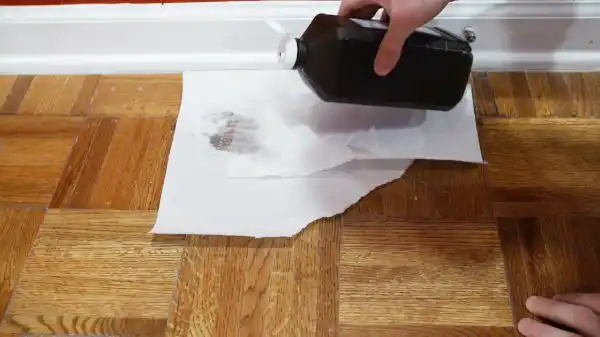
Don’t use harsh chemicals and ammonia-based products when cleaning up after your feline friend. Such products can worsen cat urine stains and odor, making it difficult to eradicate them completely. Also, these chemicals can damage the wooden floor, leading to costly repairs and replacements.
Instead, opt for natural cleaning agents such as vinegar or baking soda. These are gentle on hardwood floors and effectively clean up cat litter stains and odors. You can also use enzyme cleaners to get rid of cat urine and odors.
Can cat litter scratch hardwood floors?
If you’re worried about your beautiful hardwood floors getting roughed up, be aware that cat litter can be aggressive. This can leave behind unsightly scratches that can be a pain to remove.
Here are a few reasons why cat litter can scratch hardwood floors:
- Cat litter is made up of small, hard granules that can easily scrape and scratch the surface of your hardwood floors.
- When cats leave the litter box, they often have small remnants of litter on their paws, which they then track around the house. These small particles act like sandpaper, slowly wearing down the finish on your floors.
- Especially energetic or playful cats may scratch at their litter box, getting even smaller particles airborne and scratching your floors.
How to clean up wet cat litter on hardwood floors?
Cleaning up wet litter on your hardwood floors requires careful steps to prevent any damage to the surface.
- Begin by putting on gloves to avoid direct contact with the litter. Use your gloved hands to pick up the litter carefully, making sure not to scratch the floor.
- After picking up all the litter, let the area dry completely. This will help ensure that no moisture remains on the hardwood surface, which can cause damage over time.
- Once the area is completely dry, you can move on to vacuuming and washing the floor. Use a vacuum cleaner to remove any remaining litter or debris.
- Then wash the floor with a suitable cleaner. Be sure to choose a cleaner that’s safe for use on hardwood floors.
- After washing, rinse the floor thoroughly with clean water and let it dry completely.
Does baking soda neutralize cat litter?
Baking soda is a fantastic natural deodorizer that can effectively manage litter box odor and absorb urine odors, making it safe for cats. Here are some reasons why baking soda is a great choice for neutralizing cat litter:
- It’s an affordable and easily accessible product found in any supermarket.
- Baking soda is gentle on your cat’s paws, making it safe for them to walk on.
- It’s a non-toxic substance that’s harmless to cats if ingested accidentally.
Also, baking soda is a versatile product that can be used in various ways to maintain a clean litter box and prevent unpleasant odors. You can mix a little baking soda with the litter to help absorb urine odors and change the litter entirely every two to three days.
How should I dispose of cat litter after cleaning?

When disposing of cat litter, use a strong garbage bag or liner to avoid messes or spills. You don’t want the litter to tear through the bag and create a mess on your floors or in your trash bin. Use a durable bag that can handle the weight and volume of the litter, especially if you have multiple cats.
Avoid flushing cat litter down the drain or putting it in the recycling bin. Cat litter shouldn’t go in the toilet because it can clog your pipes or harm the environment. Also, it’s not recyclable and can contaminate other materials in your recycling bin.
Keep Your Floors Clean and Well-Maintained: Avoid Harsh Cleaners
Keep your floors looking clean and well-maintained, even with the messiest cats. Remember to avoid using harsh cleaning products that may damage your hardwood floors.
Instead, use gentle cleaners and solutions, such as vinegar and water. And if you’re dealing with wet cat litter, act quickly to prevent any potential damage. Also, consider placing a mat in front of the cat litter box and regularly cleaning the area around it to avoid litter box residue on the floor.
With a little effort and know-how, you can easily keep your hardwood floors clean and free of cat litter. So don’t let the fear of messes hold you back from enjoying the company of your feline friend.

